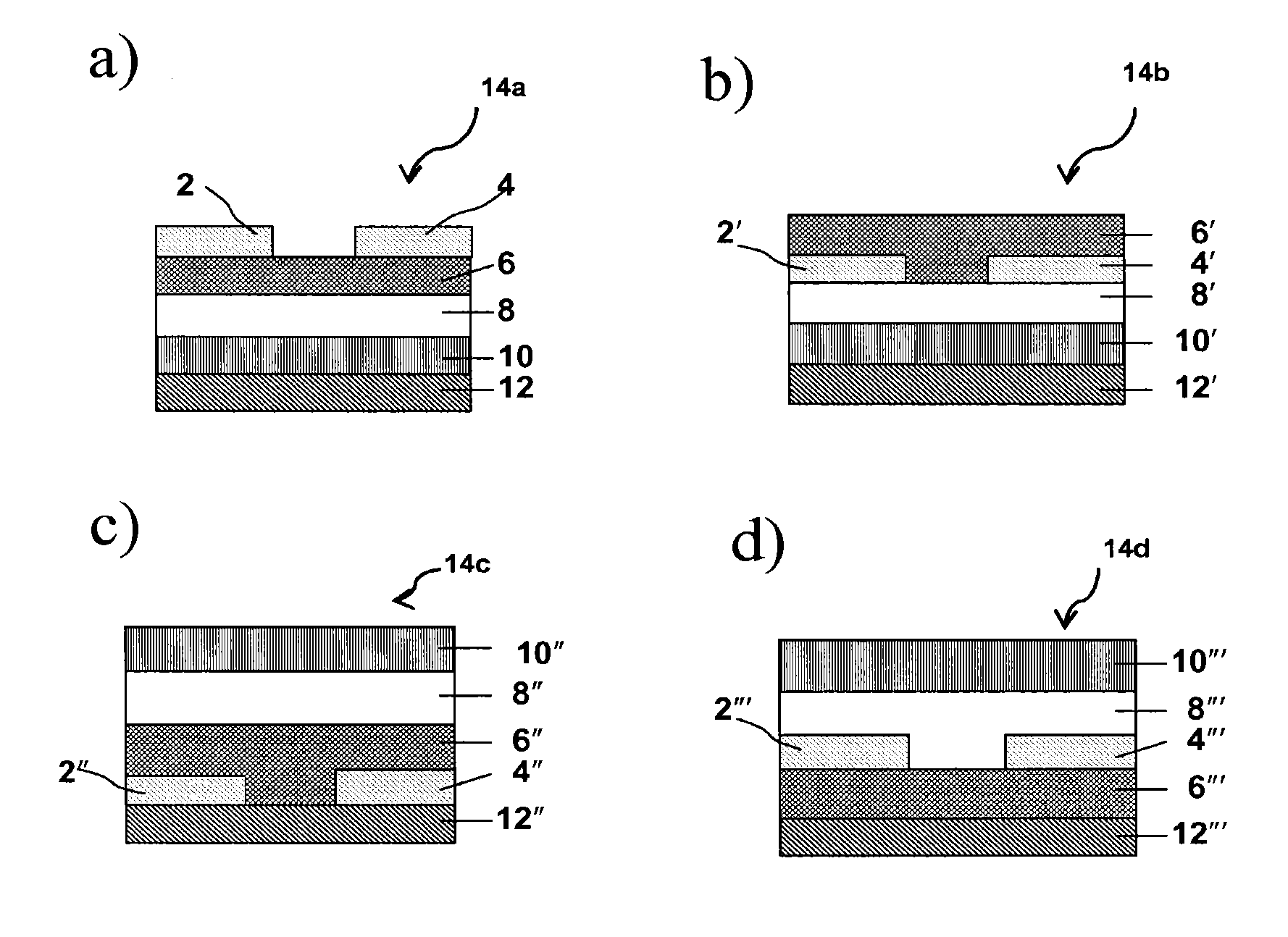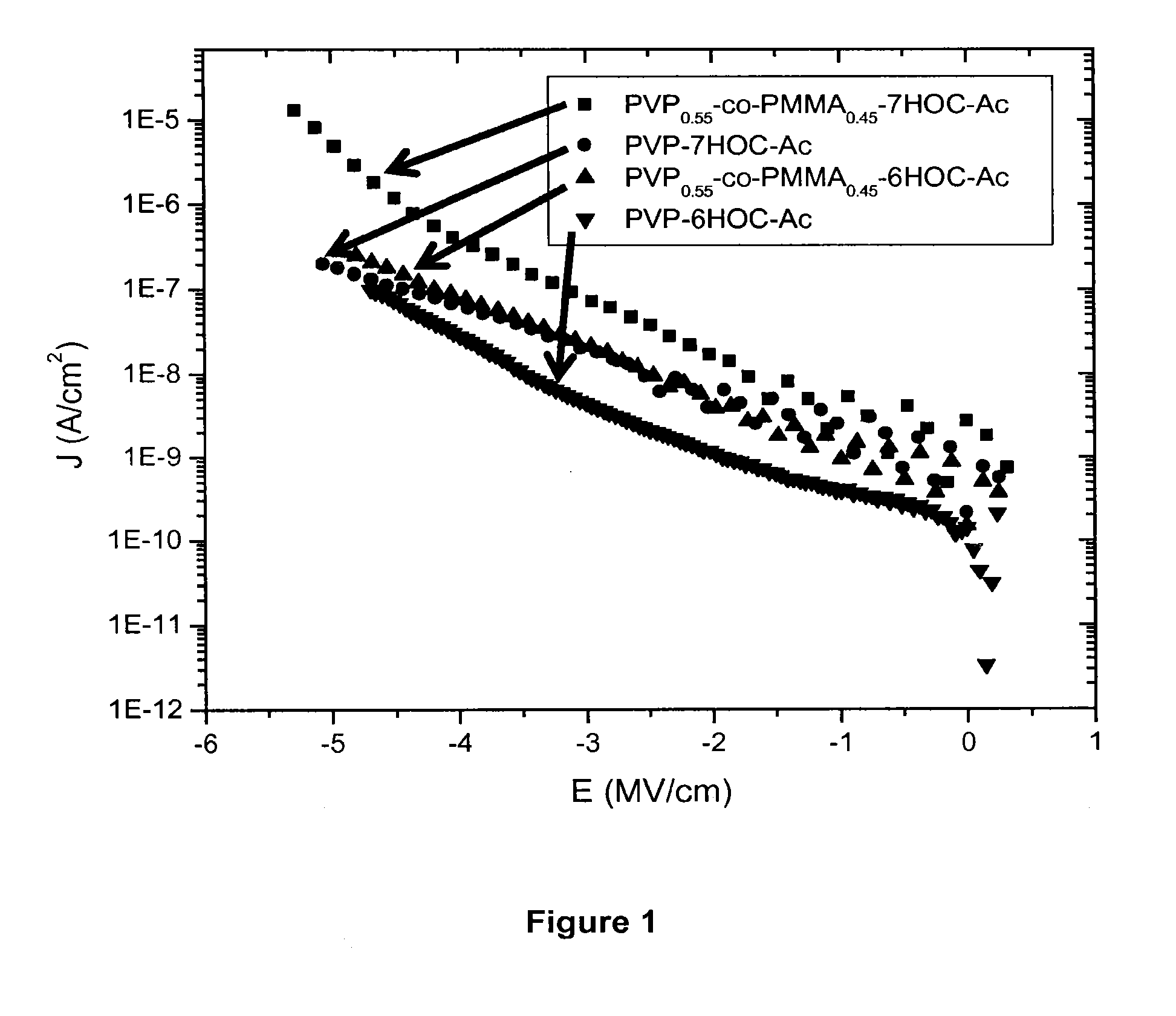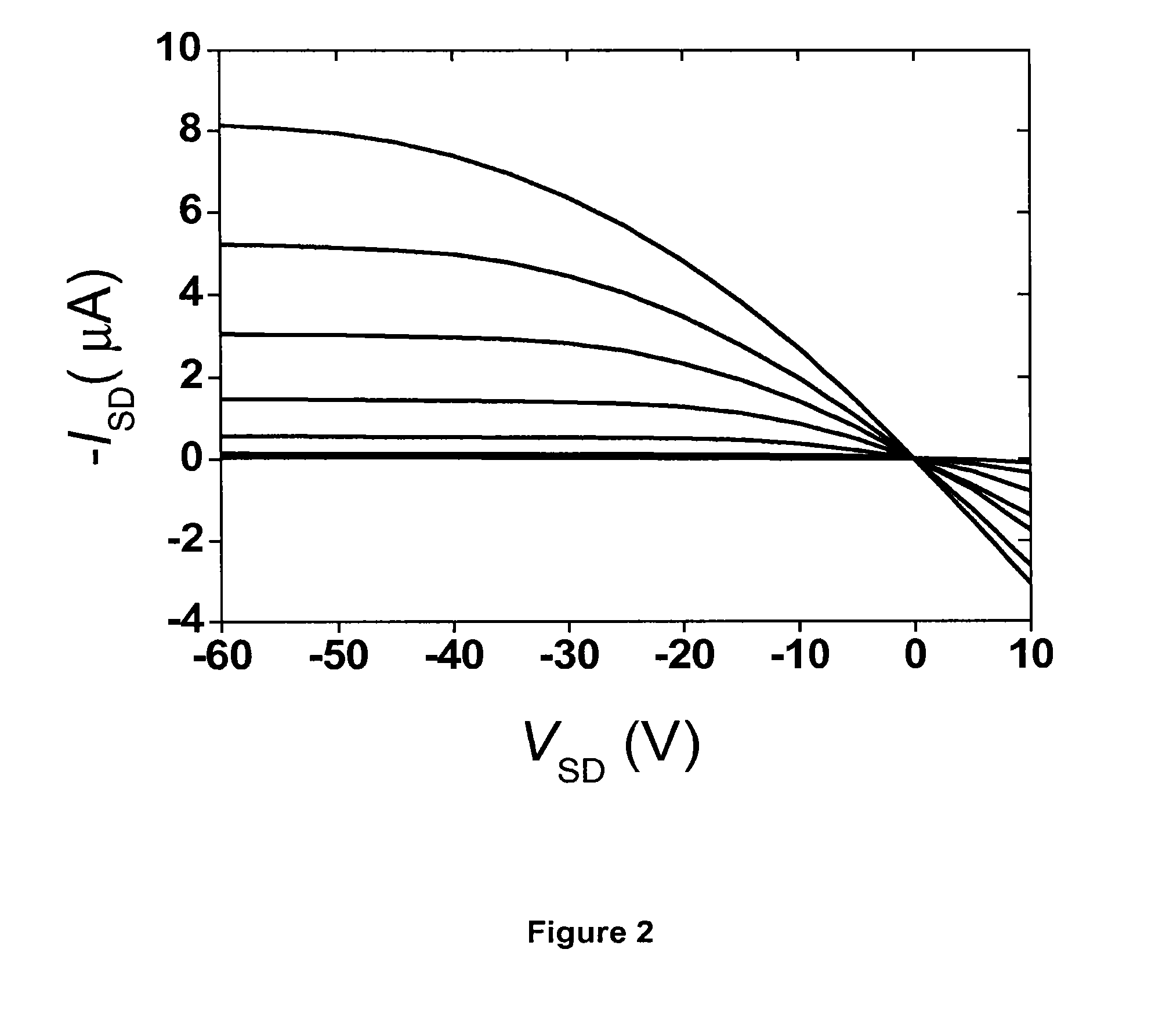Photocurable polymeric dielectrics and methods of preparation and use thereof
a polymer dielectric and polymer technology, applied in the field of photocurable polymer dielectrics and methods of preparation and use thereof, can solve the problems of inefficient curing of the dielectric film, short-wavelength uv rays and prolonged exposure, and need for high-energy light such as short-wavelength uv rays
- Summary
- Abstract
- Description
- Claims
- Application Information
AI Technical Summary
Benefits of technology
Problems solved by technology
Method used
Image
Examples
example 1
Preparation of 6Hoc-AcCl
[0125]
[0126]To a suspension of 25 g (0.15 mol) of 6-hydroxycoumarin and 30.7 g (0.22 mol) of K2CO3 in 550 mL of acetone was added 20.5 mL (30.9 g, 0.19 mol) of ethyl bromoacetate. The mixture was refluxed for 16 hours then filtered warm. The filtrate was concentrated in vacuo and the resulting solid was recrystallized from 100 mL of ethanol to give 34.8 g (91% yield) of 6Hoc-AcOEt as yellow prisms.
[0127]M.P. 113-114° C.; 1H NMR (500 MHz, CDCl3): δ 7.65 (d, 1H, J=8.5), 7.29 (d, 1H, J=9.5), 7.17 (d, 1H, J=8.7), 6.95 (s, 1H), 6.45 (d, 1H, J=9.8), 4.67 (s, 2H), 4.30 (q, 2H, J=6.5), 1.32 (t, 3H, J=6.8).
[0128]A mixture of 97 g (0.39 mol) of 6Hoc-AcOEt, 62 g (1.5 mol) of NaOH, 1 L of 1,4-dioxane, and 1.5 L of water was stirred at ambient temperature for 22 hours. The solution was treated with 150 mL of concentrated aqueous hydrochloric acid in one portion, with rapid stirring. The resulting suspension was cooled to room temperature and filtered. The filter cake was ...
example 2
Preparation of PVP0.55-co-PMMA0.45-6Hoc-Ac
[0132]
[0133]To a solution of 3.1 g of PVP-co-PMMA (MW 10 k, vinylphenol moiety molar ratio 55% based on calculation from proton NMR) and 10 mg of 4-dimethylamino-pyridine in 20 mL of pyridine was added a solution of 6.0 g (25 mmol) of 6Hoc-AcCl in 60 mL of hot 1,4-dioxane. The resulting mixture was stirred at ambient temperature for 3 hours then treated with 150 mL of methanol. The cloudy supernatant was decanted and the remaining residue was precipitated three times from 20 mL chloroform / 50 mL methanol, each time decanting the supernatant. The remaining residue was dissolved in 30 mL of chloroform and filtered directly into 100 mL of methanol cooled to −78° C. The precipitate was filtered off and dried in vacuo to give 6.3 g of PVP0.55-co-PMMA0.45-6Hoc-Ac as a white powder.
[0134]1H NMR (500 MHz, CDCl3):δ 7.67 (br s, 1H), 7.35-6.65 (m, 7H), 6.45 (br s, 1H), 4.9 (m, 2H), 3.5-0.5 (br).
example 3
Preparation of PVP0.80-co-PMMA0.20-6Hoc-Ac
[0135]
[0136]To a solution of 3.0 g of PVP0.80-co-PMMA0.20 (MW 70 k) and 10 mg of 4-dimethylaminopyridine in 15 mL of pyridine was added a solution of 7.5 g (31 mmol) of 6Hoc-AcCl in 75 mL of hot 1,4-dioxane. The resulting mixture was stirred at ambient temperature for 3 hours then treated with 100 mL of methanol. The supernatant was decanted and the remaining residue was treated with 30 mL of chloroform and stirred for 15 minutes. The mixture was treated with 100 mL of methanol and the supernatant was decanted. The remaining residue was precipitated three times from 20 mL cyclopentanone / 60 mL methanol, each time decanting the supernatant (traces of methanol were removed with a rotovap to aid dissolution in cyclopentanone). The remaining residue was dissolved in 60 mL of cyclopentanone and filtered directly into 300 mL of diethyl ether with rapid stirring. The precipitate was filtered off and washed with 3×50 mL of diethyl ether. The filter c...
PUM
| Property | Measurement | Unit |
|---|---|---|
| Tg | aaaaa | aaaaa |
| Tg | aaaaa | aaaaa |
| solubility | aaaaa | aaaaa |
Abstract
Description
Claims
Application Information
 Login to View More
Login to View More - R&D
- Intellectual Property
- Life Sciences
- Materials
- Tech Scout
- Unparalleled Data Quality
- Higher Quality Content
- 60% Fewer Hallucinations
Browse by: Latest US Patents, China's latest patents, Technical Efficacy Thesaurus, Application Domain, Technology Topic, Popular Technical Reports.
© 2025 PatSnap. All rights reserved.Legal|Privacy policy|Modern Slavery Act Transparency Statement|Sitemap|About US| Contact US: help@patsnap.com



